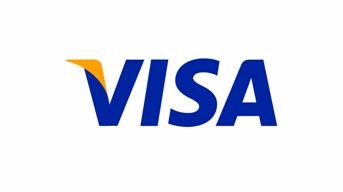
What do you do when you’re the largest payments company on the planet and every aspect of payments is undergoing huge global change? You try and identify the biggest and most threatening of these changes and try to either partner with it or do what it’s doing in a bigger way.
That’s where Visa finds itself today and one of its senior new technologies execs—Bill Gajda, whose official title is Visa’s global head of strategic partnerships—spent some of this week exploring possible payments future and how Visa could dominate them all, especially in B2B.
“I met yesterday with our head of commercial payments and, a week before that, with Prepaid. And why that’s interesting is because if we think about government disbursements, not just here in the U.S. but globally, one of the big focuses for our Prepaid Group is to replace cash disbursements or check disbursements with Visa Prepaid and that’s true in the United States, whether it’s health disbursements, welfare disbursements, etcetera, etcetera, and in many emerging markets, where there is a very high percentage of the GDP (that) are international or government disbursements,” Gajda said. “So this is a huge driver of our prepaid program. It’s how we can take the risk, the complexity, the fraud, the grey market out of these disbursements using our network and Visa Prepaid. That’s a program that is very fast growing. We’ve literally got hundreds of implementations of those disbursement programs and that will continue to grow.”
But when the conversation turns to corporate enterprises, the focus shifts. “On the commercial side, this is more focused on literal B2B payments. If we think about the invoicing process and what that means, the number of checks that are still floating around, electronic bank transfers, paper invoices, our promotional strategy is all around how can we again use the Visa network in commercial visa accounts to enable this business of business transaction, and so that’s their focus,” he said. “I had the discussion with (Visa’s head of commercial payments) about ‘What about these crypto currencies?’ I would say that I don’t see these cryptocurrencies as currencies representing a threat to the established networks in themselves, because today at least they are very complex. The regulatory environment is very uncertain, right? You’ve really got to be a sophisticated user to understand how these cryptocurrencies work. They are not for the layman.
“But if you have abstracted the currency elements, the notion of a very transparent, low cost, algorithmically-based processing capability is something we should all be looking at. We know generally that the physical network that we built over 50 years ago, new technologies are going to allow us to replicate that reliability with some cloud-based capabilities, with some of these potentially these algorithmic-based capabilities,” he said. “So our Commercial Group is really interested in how these crypto networks work on the currencies. We are going to work with them as part of our Innovation Group just to better understand what these processing capabilities are. Can they augment what we do? I think we are really (in the) early days. We are starting out at the beginning of these crypto networks. But I think it’s just an example of how Visa and the other networks and the issuers are going to have to watch all of these spaces very carefully, because it’s all changing very quickly.”
(Click here to read about Bajda’s views on non B2B payments issues, from the same conversation.)